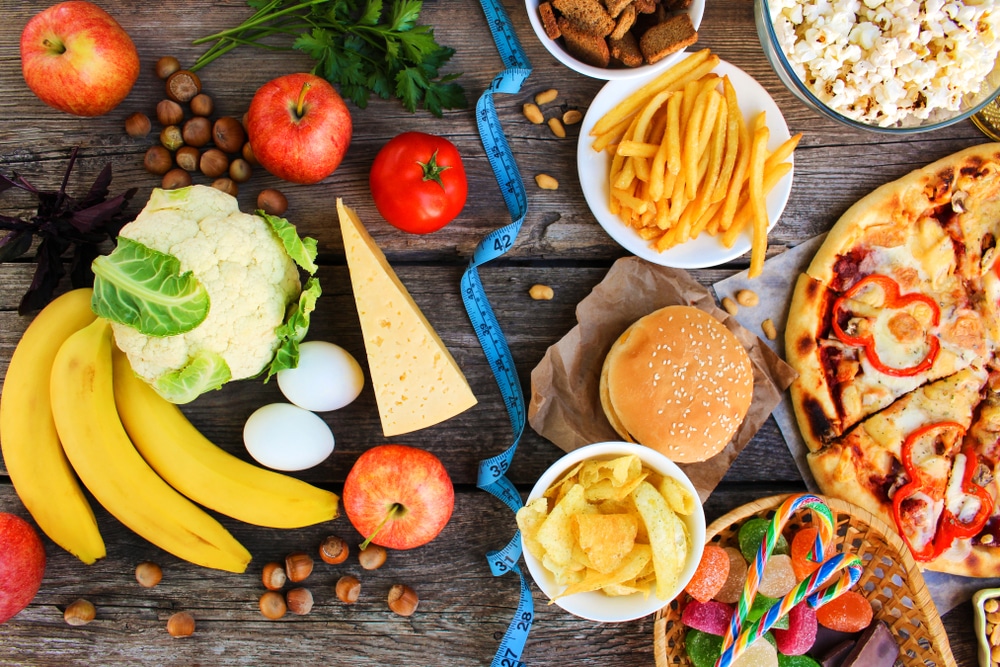
12 Engaging CLIL Lesson Plan Examples for Kids and Teenagers
Like a long road trip, CLIL is one of those things that sounds magical from a distance.
That is, until you actually start to do it—then reality sets in.
With CLIL (Content and Language Integrated Learning), students learn various subjects like history, art, science and math in a foreign language. Rather than being a stand-alone subject, language becomes a skill acquired in the classroom while mastering other types of content.
Here are some lesson plan examples and tips to make your CLIL lesson planning less torturous—maybe even fun!
Contents
- The Ingredients of a Great CLIL Lesson
- Fantastic CLIL Lesson Plans for Your Classroom
- 1. What Can Art Tell Us About Ourselves?
- 2. Dominant vs. Recessive Traits
- 3. Weather Patterns
- 4. Diving into Ocean Life
- 5. Effects of Our Food Choices
- 6. Governance and Society
- 7. Wikipedia Reborn
- 8. Currency Exploration
- 9. Landform Evolution
- 10. Math Becomes the Star of the Show
- 11. Formulas in Action
- 12. Math Conversions in Daily Life
- Tips for Planning and Teaching CLIL Lessons
Download: This blog post is available as a convenient and portable PDF that you can take anywhere. Click here to get a copy. (Download)
The Ingredients of a Great CLIL Lesson
Before we begin the planning process, let’s think about what comprises a quality CLIL lesson.
- Aligns with curriculum goals. Look at your curriculum and consider your ultimate goal. What do you want students to know? What do you want them to be able to do at the end of the lesson?
- Encourages higher-order thinking skills. While you may need to spend some time using lower-order thinking skills like identifying and recalling, always strive for those higher-order skills: problem-solving, critical reasoning, evaluation and creation.
- Engages all four language skills. A great CLIL lesson engages students in listening, speaking, writing and reading. Cultivating all four skills will help students not just with learning the language but with understanding the subject matter too.
- Immersive and communicative. Surround students with the target language. Do all you can to make sure they use the target language as much as possible. Encourage natural speech as an alternative to grammar drills whenever you can.
- Connects to multiple subjects and disciplines. The more connections students make, the more meaningful and memorable the lesson will be. Look for as many cross-disciplinary connections as you can, possibly with help from your colleagues.
Fantastic CLIL Lesson Plans for Your Classroom
To get you started, here are 12 CLIL lesson plans across diverse subjects that you can adapt for your class:
1. What Can Art Tell Us About Ourselves?

Grade/Level: High School
Connections: Art, Social Studies, History
Time Required: 3-5 days
Description: Based out of Los Angeles, the J. Paul Getty Museum creates engaging lessons to promote appreciation of art. These can easily be combined with the target language and culture to provide a quality CLIL experience.
In this lesson, students can view and compare works of art from the Impressionist period in France. They will learn to converse about art using adjectives and descriptive terms in the target language. They can then discuss and write about their connections to the daily lives of young people in 17th-century France.
You may want to start by showing students samples of artwork and asking them to “chalk talk” their impressions of the work. What are the most prevalent colors? What is the mood? How does the painting make them feel? After discussing their answers, go back and have them read about the painting’s historical context.
Desired Outcomes
Students will be able to:
- view and discuss art as a means of understanding social conventions, history, politics and creativity. (speaking)
- organize target-language information quickly using visuals and graphic organizers. (reading and writing)
- engage in target-language discussion about the process of conveying our true selves through art. (speaking and listening)
- create their own artwork and present it to the class using descriptive words from the target language. (speaking)
2. Dominant vs. Recessive Traits

Grade/Level: 9-12
Connections: Science, Biology, Math
Time Required: 2-3 weeks
In this inquiry-driven activity, students will explore genetics and heredity by looking at the prevalence of dominant and recessive traits in the general population.
At first, they’ll learn the necessary target-language vocabulary to conduct surveys among their peers. For example, they might look at eye color, hair color, dimples or freckles. They’ll then collect, analyze and present the data in the form of an infographic, incorporating the learned vocabulary.
The activity not only allows students to grasp complex biological concepts but also encourages them to use the target language practically and creatively.
Desired Outcomes
Students will be able to:
understand dominant and recessive traits through investigation and data collection. (reading and speaking)
analyze and interpret their data. (reading and writing)
make an infographic about what they’ve learned. (writing)
do discussions, presentations or debates about their findings. (speaking and listening)
3. Weather Patterns

Grade/Level: 3-5
Connections: Science, Geography, Art
Time Required: 2-3 weeks
In this engaging and interactive activity, students will embark on a journey to understand weather patterns and how they vary across different regions of the world.
Introduce them first to different weather terms and the science behind predicting weather patterns, including phenomena like avalanches, droughts and fog. Armed with this knowledge, students will then script and record their very own detailed weather forecasts, presented in the target language, for four distinct places worldwide.
Encourage their creative side by having them design backdrops that represent the respective weather conditions in the countries they’re reporting from. This immerses them in a role-play experience that blends science, art and language learning.
Desired Outcomes
Students will be able to:
- use weather-related vocabulary. (reading)
- write a weather forecast. (writing)
- make creative backdrops for different weather conditions. (speaking)
- present a weather forecast video. (speaking)
4. Diving into Ocean Life

Grade/Level: 6-12
Connections: Biology, Art, Math, Social Studies, History
Time Required: 17 days
Description: This lesson plan from Scholastic gives students many opportunities to engage with the content through hands-on experiences like field trips.
During visits to field sites, students will make target-language observations about marine life. Each student may choose a different animal on which to focus (i.e., squid, crab, turtles, dolphins). Students make use of research, reading and writing skills while documenting and presenting their observations of marine life.
If your technology is limited, consider putting students into groups to study the various animals. Assign each student in the group a specific role (searcher, leader, note taker, etc.).
Desired Outcomes
Students will be able to:
- represent problems and findings visually in graphic organizers. (reading and writing)
- use available technology to observe, describe and discuss the behavior of ocean organisms. (writing)
- analyze data. (reading)
- communicate their observations in the target language. (listening and speaking)
5. Effects of Our Food Choices

Grade/Level: 4-7
Connections: Science, Art, Math
Time Required: 2 weeks
Description:
In this unit, students delve into the complex world of nutrition and its effects on health. Students will learn about the food pyramid, exploring the vocabulary of different food groups and the foods commonly found in each.
They will maintain a food journal, documenting their daily food intake alongside their mood and performance in various tasks.
After a week of recording, each student will synthesize this data into a visual representation (like a poster, slideshow or infographic) that shows the proportions of food groups they consumed and how their food influenced their physical and mental well-being.
Desired Outcomes
Students will be able to:
- get to know food-related vocabulary. (reading)
- write a detailed food journal connecting their diet with their life. (writing)
- analyze data and identify patterns between diet, mood and performance. (reading and writing)
- create a visual representation summarizing their findings. (writing)
6. Governance and Society

Grade/Level: 9-12
Connections: Social Studies, Civics
Time Required: 3-4 weeks
Description:
In this insightful lesson, students will explore different governance systems and evaluate how these impact society.
Equipped with the vocabulary and understanding of terms like oligarchy, democracy and monarchy, students analyze excerpts from various global constitutions or laws in the target language. They will craft a constitution for an imaginary country, articulating the chosen governance model and its underlying rationale.
Students will then address a societal issue (like homelessness or conflict), detailing how their devised government would navigate the problem, fostering critical thinking and application of learned concepts.
Desired Outcomes
Students will be able to:
- Uuse governance-related vocabulary in the target language. (reading, speaking and writing)
- analyze and critique real-world constitutions or laws. (reading and speaking)
- make a constitution for an imaginary country with justified governance choices. (writing)
- describe problem-solving strategies in line with their chosen governance model. (speaking)
7. Wikipedia Reborn

Grade/Level: 6-8
Connections: Social Studies, Science
Time Required: 3 weeks
Description: The folks at Wiki Education put together this lesson in which students edit and expand Wikipedia pages. Engaging in this process fosters critical thinking as students learn to evaluate sources of information in depth.
The class can design and create their own series of Wikipedia articles using accessible target language. On a shared wiki, each student will be responsible for researching and writing about a particular topic.
When finished, students can develop their skills even further by critically evaluating the work of their peers. They could even edit and expand on each other’s pages.
Desired Outcomes
Students will be able to:
- evaluate sources on the internet. (reading)
- aggregate data. (reading and writing)
- thoroughly research a topic. (reading)
- communicate findings in the target language. (speaking and listening)
8. Currency Exploration

Grade/Level: 6-10
Connections: Economics, History, Social Studies
Time Required: 3 weeks
Description:
In this unit, students embark on an exploration of global currencies, delving into their histories, values and cultural significance.
They will initially learn about various currencies worldwide, followed by a detailed research project on a chosen currency. This would involve looking at how the currency is related to the country’s history and culture and how it evolved in the context of globalization.
Students will synthesize their findings into a visual and verbal presentation, comparing the selected currency with their country’s currency, emphasizing economic value and cultural narratives.
Desired Outcomes
Students will be able to:
- identify and explain the values of various global currencies in the target language. (reading, writing and speaking)
- research a chosen currency’s history and cultural relevance. (reading and writing)
- analyze and compare currencies. (reading and speaking)
- give a detailed presentation sharing their findings. (speaking and writing)
9. Landform Evolution

Grade/Level: 3-5
Connections: Geography, Earth Science, Art
Time Required: 2 weeks
Description:
In this interactive unit, students will delve into the fascinating world of landforms and their transformations over time.
Introduce them first to different landform names and characteristics, like mountains, valleys and estuaries.
Following this, each student will make their own illustrated story about a chosen landform, ideally one in proximity to their living area. The narrative will incorporate target vocabulary and depict the formation and evolution of the landform while also highlighting its impact on nearby communities.
Desired Outcomes
Students will be able to:
- learn and use landform-specific vocabulary in the target language. (reading, writing and speaking)
- create a narrative showing a landform’s evolution. (writing)
- present their illustrated story to the class. (speaking)
- interpret their classmates’ stories. (listening)
10. Math Becomes the Star of the Show

Grade/Level: 4-12
Connections: Math, Art, Science
Time Required: 1-2 weeks
This lesson from PBS engages students in something that they love: video and animations. By reflecting on the critical thinking skills involved in the creation of a video, students access deep learning while making connections among several disciplines.
Students will learn about the math skills needed to produce quality animations and videos, then create their own storyboard and characters to make their own target language video. While presenting, they will use the target language to describe their process.
Encourage students to have fun and get silly with this project. They can include unique voice-overs and sound effects to make it more engaging.
Desired Outcomes
Students will be able to:
- understand and apply media techniques and processes. (speaking and listening)
- graph proportional relationships. (reading and writing)
- find whole-number quotients and remainders with up to four-digit dividends and one-digit divisors. (reading and writing)
- reflect on their use of mathematical processes in the creation of their own target-language video. (writing and speaking)
11. Formulas in Action

Grade/Level: 6-8
Connections: Math, Science, Art
Time Required: 2-3 weeks
Description:
This lesson will teach students about the practical applications of mathematical formulas, revealing their critical role in creating real-world objects.
Students learn key formulas for mass, velocity and area in the target language. With this knowledge, they’ll design and build airplanes using materials like cardboard and duct tape.
Students will share the logic and formulas behind their designs before testing their airplanes in a distance flight competition, thus linking theoretical knowledge to practical outcomes.
Desired Outcomes
Students will be able to:
- learn and apply formulas related to motion in the target language. (reading)
- use formulas to design and construct a functioning airplane. (writing)
- explain the role of formulas in their design process. (speaking)
- do a competition to test how effective their designs are. (listening, speaking)
12. Math Conversions in Daily Life

Grade/Level: 6-8
Connections: Math, Home Economics
Time Required: 2 weeks
Description:
This activity integrates mathematics with daily life skills as students engage in a real-world application of mathematical conversions.
The class will compile a recipe book in the target language, with each student contributing a favorite home recipe. Students will translate these recipes into the target language and convert measurements into either the metric or the US system using learned equations.
Additionally, students may work in groups to modify no-bake recipes to suit varying numbers of servings, fostering a deeper understanding of conversions in a practical context.
Desired Outcomes
Students will be able to:
- apply math conversions in practical scenarios, like recipe adjustments. (reading)
- translate and rewrite recipes in the target language. (reading and writing)
- work together to modify recipes for different numbers of servings. (reading and speaking)
- present their modified recipes and the process they used to the class. (speaking)
Tips for Planning and Teaching CLIL Lessons
As you can see from the lesson plans above, you can get creative with CLIL lessons and include diverse themes! Whether you want to make your own lesson plan or you’ll be working off these examples, here are some ways to make your CLIL lessons even more effective:
Teach vocabulary separately
Pick the important concepts and words and teach them in isolation from the main lesson. I usually prep students by doing this beforehand, but you can also choose to wait until after the class.
During the class, assume your students are native speakers of the target language and just teach the subject. For example, when the lesson is about math, teach actual addition and subtraction, not the translation of the word “addition” in German. Teach the math and be a math teacher for the duration of the activity.
In the course of the lesson, kids will be compelled to use their critical thinking skills to figure out the meanings of any unknown words.
Include authentic materials
Aside from CLIL materials on the subject you want, look for authentic materials too about the subject at hand. For example, on top of CLIL-specific materials about philosophy in German, I’d look for native German discussions, blogs, websites, forums and book excerpts about philosophy too
There are three particular sites that I often check because they’re loaded with authentic materials and educational links:
- Government sites and ministries. One of the aims of national leadership, for all states, is the education of their populace. So you can be sure that their websites have links to resources that can help you find material for CLIL. For example, the site for France’s Ministry of National Education has links to academic sites and even its own search engine.
- Websites for the top universities in the country. Naturally, these sites are replete with links to the latest research, publications, lessons and journals. You may also find online libraries, databases and even e-books you could use. Take the example of Technische Universität München, one of the top universities in Germany.
- Forums for native speakers. When you join these forums, you’ll have reached the inner sanctum of the country—at least online. Read the posts and discussion and you’ll have an insider’s look not only at their relationship problems, you’ll find in their postings, links to sites that native speakers actually use and recommend to each other. This one’s big in China.
Give simple worksheets
Keep any CLIL worksheets visually appealing and user-friendly. Avoid overcrowding it or making it too “busy.”
Use a consistent font and style throughout—ideally a basic font that won’t be distracting. Include lots of pictures and graphs to enhance the visual appearance.
These are my favorite resource websites for worksheets:
- One Stop English — This site provides unique English CLIL resources that can be adapted to any language. You’ll find puzzles, crosswords, vocabulary worksheets and more catering to a range of ages.
- Teachers Pay Teachers — As the name suggests, this is a platform where teachers can sell resources that they’ve created to other teachers. Just look up “CLIL Teaching Resources,” and you can even filter for worksheets and select them by subject and grade.
- Scholastic’s Teacher Resources — This is a great place to find worksheet ideas to fit any subject you’re teaching through CLIL. You can get grade-appropriate lesson plans here on everything from literature to basic science to economics.
- Instant Online Crossword Puzzle Maker — This non-traditional worksheet option is great for teaching vocabulary in any subject or language in an engaging way. You can use this instant crossword maker to easily produce fun worksheets targeting any vocabulary set you’re working on.
- Pinterest — Mostly known for craft and home decor inspiration, this popular platform is now also a go-to source for great lesson plan ideas, especially for elementary school children. Just type “CLIL” into the search bar plus the name of the target language (e.g. “CLIL italiano”).
Do scaffolding
Give the students the temporary support they need to reach higher levels of comprehension and mastery, in terms of both the language and the content.
Begin with simple tasks and work your way up to those that are more complex. Give clear directions and explain concepts in multiple ways to ensure understanding.
I sometimes start with intro exercises where students match vocabulary with images, followed by guided readings where key vocabulary is highlighted. After that, students can do more involved discussions and activities that involve problem-solving and research.
Use gestures, visual aids and props.
You used to just stand there and talk. With CLIL, not anymore. Illustrate what you’re speaking about, and you’ll see that students are better able to grasp your message.
Break up presentations with videos and images that students will find interesting. You can show mind maps or flowcharts to explain more complicated processes.
I also try to bring props whenever I can. I’ve used 3D models of different shapes in math when explaining concepts like area or volume and even puppets for storytelling. If the subject is history or geography, these might be objects related to what the students are learning.
By now, you’ve already got a lot of ideas to get started.
Try out these lesson plans and tips and create a CLIL experience that your students will never forget!
Download: This blog post is available as a convenient and portable PDF that you can take anywhere. Click here to get a copy. (Download)


